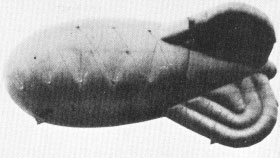 Click
for Site Directory
Click
for Site Directory2050056 Leading Aircraftwoman Hilda Mudd
Hilda was born in Estevan, Saskatchewan, Canada in 1923. Her parents and her uncle Absalom emigrated there from Grassingtonin Yorkshire and set up a smallholding on the prairie. Her father suffered from pernicious anaemia (where the body can't process vitamin B),
and in those days there was no effective treatment for it, so he died when she was only 6 years old.
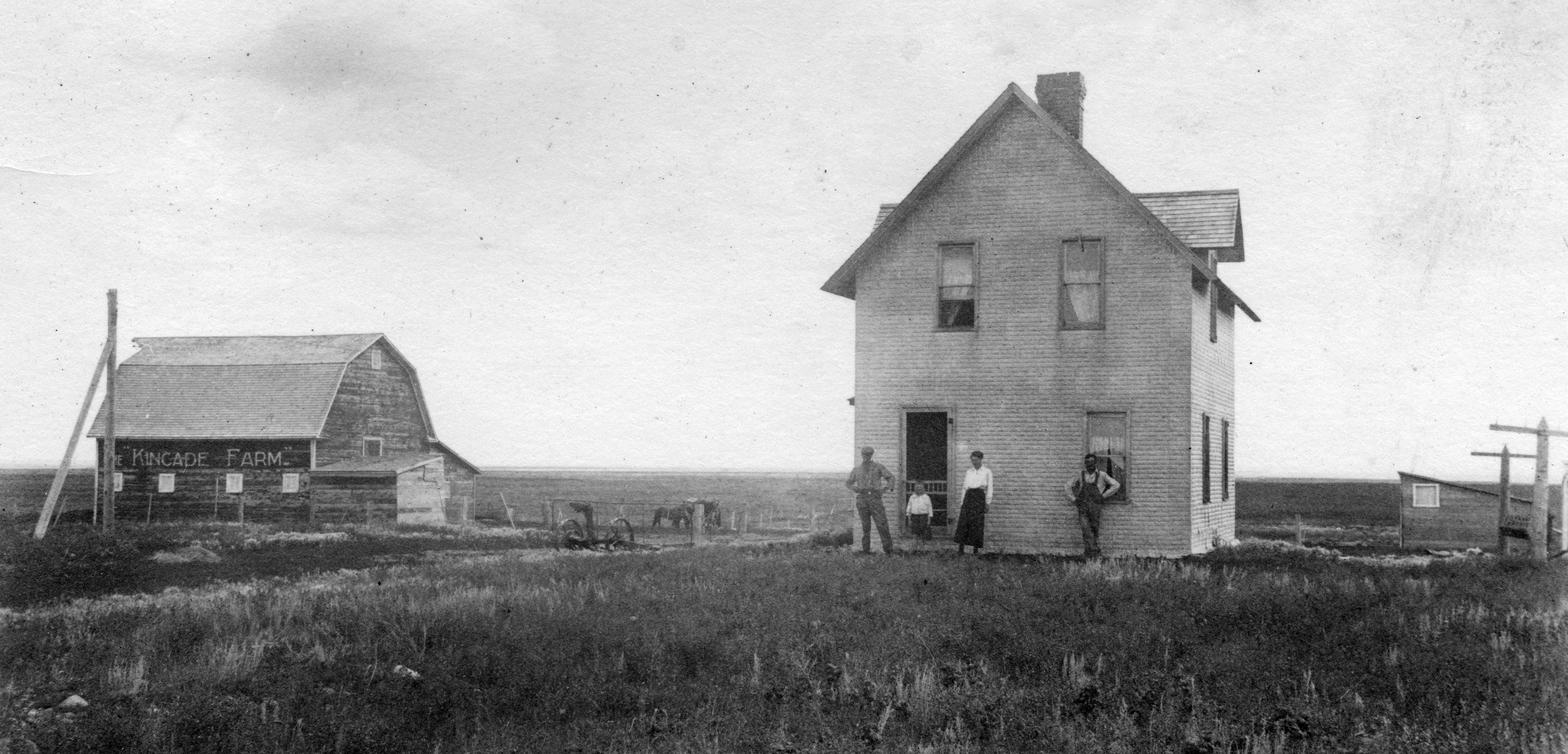
Hilda and parents, and Uncle Abe at Kincade Farm in Canada
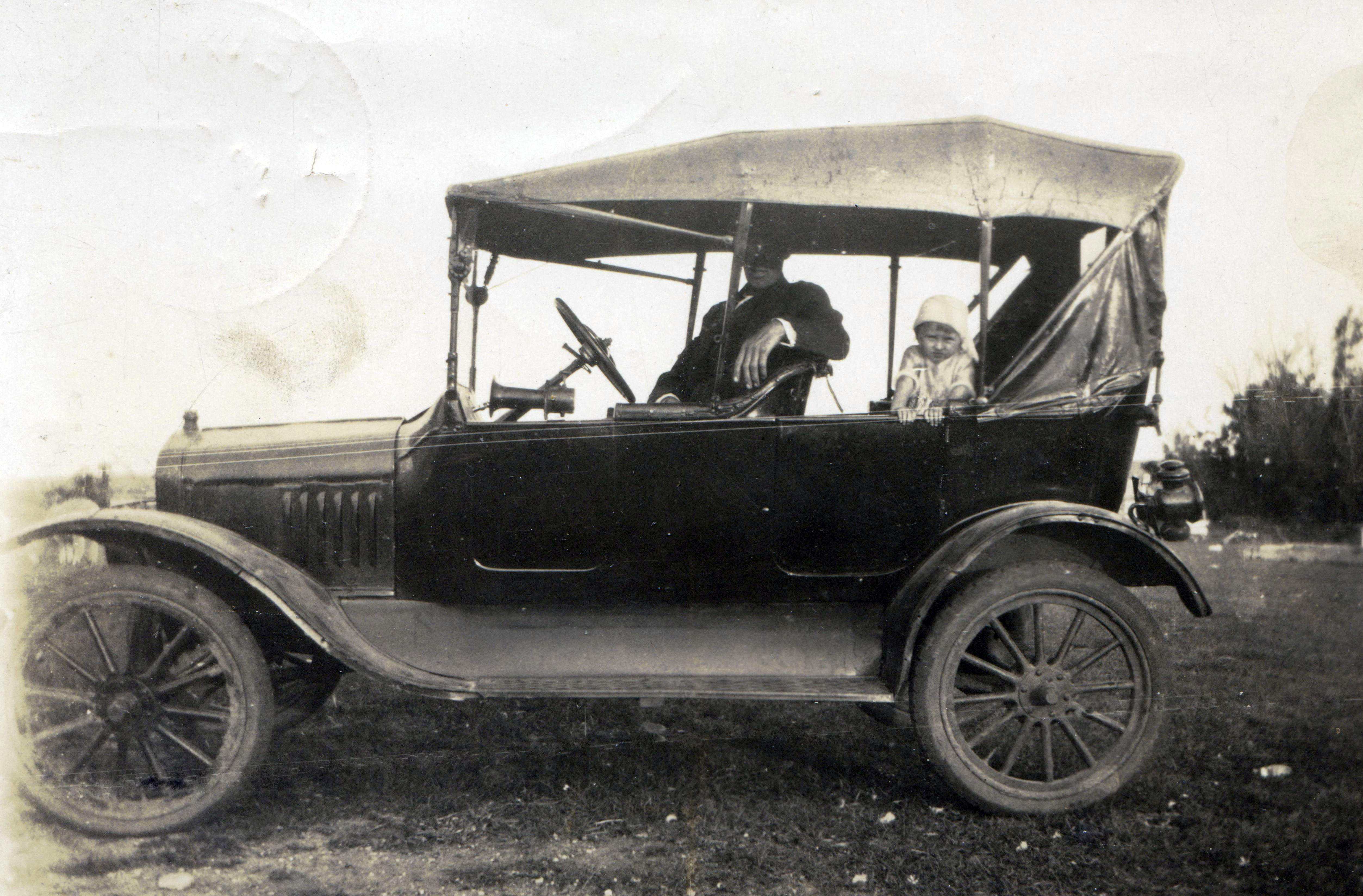
Hilda and Uncle Abe
ride in style
and speaking with a funny foreign accent she did not make many friends at school. But as with many of her generation she left school at 14
and went to work in a grocers' shop.
When war came she joined the W.A.A.F.s as soon as she was able, and at last she found herself able to make friends and fit in. She also go totravel around the UK and meet lots of people. They were the best days of her life, she said.
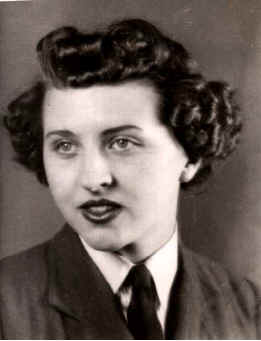
2050056 Leading Aircraft Woman Hilda Mudd .

Hilda in 1941 on her 18th birthday
This is the story of Hilda Harrison (Nee Mudd) who served with 953 Squadron at Barry
Her service number
indicates she joined up around
May
1941 by the Inspector of Recruiting.
"Life on
a barrage balloon site was totally different from that of an R.A.F. station. We
were a self-contained unit of 14 to 16 young
girls. I was
18 when I did my training in the
and around
ports and cities around
arduous work
and what is now called "antisocial hours"; starting at 2/4d per day for
Aircraftwoman 2nd Class, plus 4d per day War
Pay.
We were allowed one 24 hour pass each week, and two evening passes, weather
permitting. Every night, we stood picket duty
on 2 hour
shifts. We lived in Nissen huts . those half-moon corrugated iron contraptions;
cold in winter, hot in summer. The floors
were
usually bare concrete with a bedside mat. We kept our clothes in empty
ammunition boxes. Sites near the centre of the city
would have
electric lights. Those not so lucky would have Tilley lamps. Our water came from
a stand-pipe in the ablutions hut,
although some
sites might have to use one several hundred yards away. There were no baths, of
course. Twice a week we went
in pairs to
the public baths, usually a bus-ride away. On one site I was stationed on in
Barry Dockyard we took the train to have
our bath".
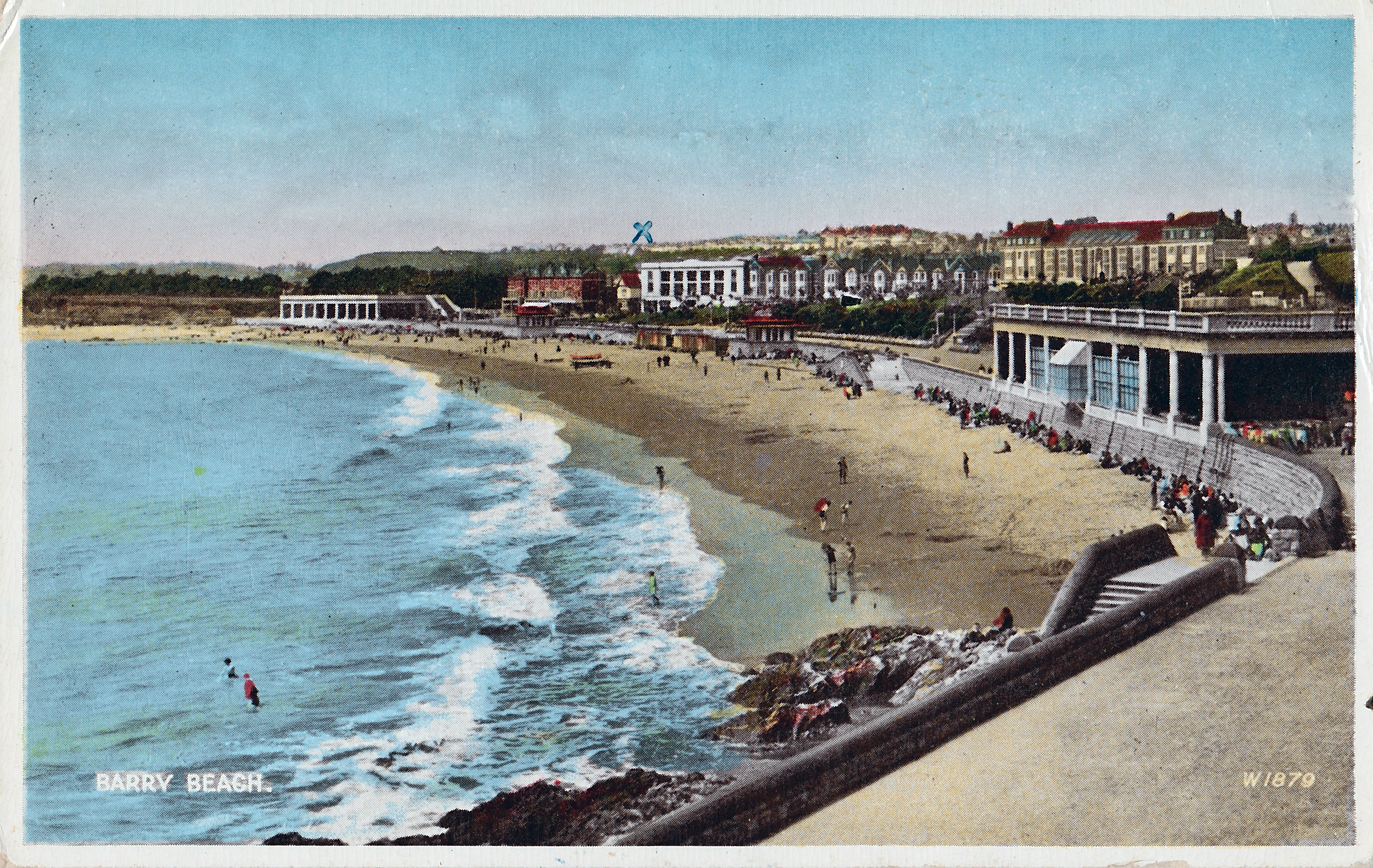
Barry Island postcard sent by Hilda to her mother: the "X" marks the spot where the Balloon Barrage was set up in WWII.
"All the hot water required on site had to be heated by coke fires. We were
not issued with any coal or kindling wood
and
used cleaning rags soaked in dirty sump-oil from the winch to get our fires
going. If we happened to be near a railway we
were
lucky, as firemen on the steam engines could often be persuaded to throw us a
cob of coal. The toilets were wooden
seats over
iron buckets. Once a week, a tanker arrived and we took turns to empty the
buckets. We had a rota for duty cook also.
It
was important never to allow the kitchen stove to go out, otherwise it would
never get hot enough to cook the next meal.
When the
ration truck came we ate well enough, then meals tended to get skimpy until its
next visit. The meat would be sausages
or offal.
Scrambled dried egg and tinned pilchards also featured largely on our menu. The
puddings were invariably prunes and
custard or
rice. We were issued with 7lb tins of jam for teas and fried jam sandwiches were
a popular delicacy. Sometimes there
was
a slab of cake with the appearance of compressed sawdust which we referred to as
"yellow peril"! There was always a slab of
yellow cheese
with the texture of common washing soap and the milk was tinned. I spent one
Christmas on a training site taking a
trade
test for a promotion. We had one chicken between 22 of us and we boiled the
Christmas pudding in the fire bucket!
That site was
in a park and the stand-pipe was some distance away. To wash, we put on gumboots
and waded into the nearby stream.
Some
mornings we had to break the ice first, but as we were only there for a
fortnight it did not worry us too much. The work was
heavy
and the living conditions were rough but as a consequence the discipline on a
balloon site was pretty easy-going. We did not
have to stack
our beds like they did on a Station. If we had been up most of a stormy night,
attending to a balloon that wanted to take
off on its
own we were allowed a nap during the afternoon. We did not have to wear a collar
and tie. We wore battledress or dungarees
and men's
boots or gumboots and sleeveless leather jerkins in winter. We wore a beret
instead of the usual peaked cap. This was
more
practical for crawling under and around a pitching and tossing balloon on its
bed. One of the things to be carefully guarded against
in
those days of severe petrol rationing was getting the tank of our winch syphoned
in the blackout. The sites still crewed by airmen were
guarded with
a rifle but we girls only had a truncheon to protect ourselves and government
property. I do know of at least one intruder
who
found himself in hospital after sampling the weight of a W.A.A.F.'s
truncheon. The
duty officer often paid a visit in the small hours".
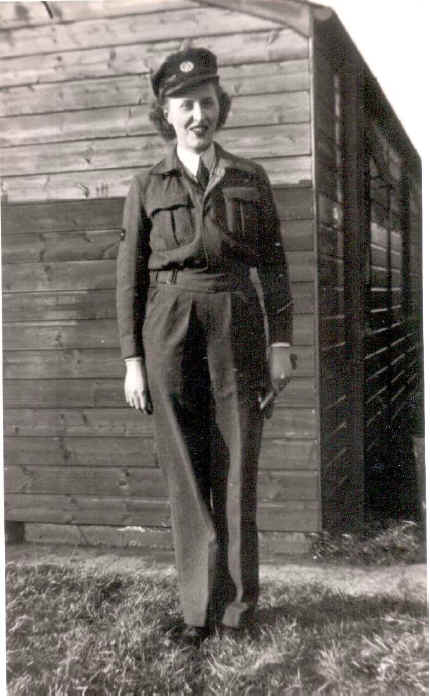
Hilda at Sutton Coldfield 1947
"One Flight
Commander I recall drove a very noisy little open-topped car which could be
heard a mile away on the still night air. He at
least never
caught the guard making cocoa in the kitchen! In some places we were quite an
attraction and would often have an audience
when
we were handling a balloon. One such place was Barry Dockyard where the seamen,
mostly American, would reward our efforts
by
throwing oranges and lemons over the high mesh fence. These were a great luxury
in wartime, although once I was the
receiver of a
bottle of scarlet nail varnish . totally useless to any of us. Apart from not
being allowed to wear it, we all had ugly hands,
scarred
by rope burns and ingrained with oil from handling pulleys and shackles. There
were idyllic summer days when the barrage floated
5,000
ft above us and we lounged in the sun splicing new guy ropes, but also there
were stormy days and nights when we had little rest as
we struggled
to keep our balloon on its storm mooring. To achieve this the bow must always be
kept into the wind . Not easy in a gusting,
veering wind.
Each guy rope had to be moved in turn, one point at a time, whilst another girl
dragged its 56lb concrete ballast block with it.
As the
balloon pitched and tossed in the wind the guy ropes sprang taut and the ballast
blocks swung into the air, just at the right height to
smash a
kneecap, if you did not stay alert. Finally the great silver hulk was edged back
into wind, perhaps only to repeat the process one hour
later
when the direction of the wind changed yet again. To be woken by the duty picket
shouting "Out of wind!", it was not a welcome sound.
It was also
important that the balloon did not rip her belly on her concrete bed or on her
own wire rigging, because she was only made of
Egyptian
cotton covered in silver dope. To this end, we crawled on hands and knees to
adjust the heavy canvass ground sheets under her. It
was important
too that we did not get entangled in the shifting wire rigging. In the blackout
we worked by torchlight, often cold, wet and weary.
Sometimes we
lost the battle to save our charge from destruction. I recall one such winter
night in
A
straining guy rope tore a starboard panel clean out of our out-of-wind balloon,
she then floundered like a wounded elephant until all the
hydrogen had
escaped. That was a lot of wasted gas, and we were not very popular with Flight
Headquarters! However, that was not the only
loss that
night. It was the worst storm I remember. The next day when the wind abated, as
it curiously often did at dawn, the gas trailer arrived
and we had
the tiresome job of inflating a new balloon. We wore plimsolls and no metal
about us, for fear of a spark igniting the highly
inflammable
hydrogen. It was a cold job unscrewing the caps on the huge cylinders. As soon
as the gas began to flow down the hoses everything
became
covered in frost. A damaged balloon was not the only occasion when we had this
task. The purity of the hydrogen had to be carefully
checked daily
and a cylinder or two might be added, but eventually the purity became
dangerously low as it became contaminated by air.
Then the
balloon had to be deflated and filled with fresh gas. This usually happened in
warm weather when the balloon was flying all day.
The gas
expanded at altitude and constantly valved off. In the cool of evening the gas
contracted and a very flabby object hung in the sky above us!
I never heard
of a barrage balloon bringing down an aircraft. They were supposed to do this by
means of a mechanism which cut the steel cable
if
it was fouled, whereupon the cable would wrap itself round the aircraft. But the
balloons did keep enemy bombers at height, when bomb sights
were less
sophisticated than they are today. A silver barrage balloon floating in a sunset
sky had a curious proud beauty all of its own. At W.A.A.F.
reunions
after the war the Balloon Operators always seemed to congregate together even
though they did not know each other in service days.
We were still a trade all of our own."
recruited a lot of his staff from ex-servicemen and women. She worked in the booking office. Some time in the 1950s she moved to Preston,
where she lived in lodgings and worked at the Motor Tax office there. Although she had learned to drive a winch truck during her days in the
W.A.A.F. she never learned to drive a car herself. It was in Preston that she met her husband Tom Harrison, a painter and decorator. He had come
to paint her landlady's lounge. They were married in 1953 and lived all their married life in a house in a village just outside Preston. They had 2
children, Lorna and Graham.
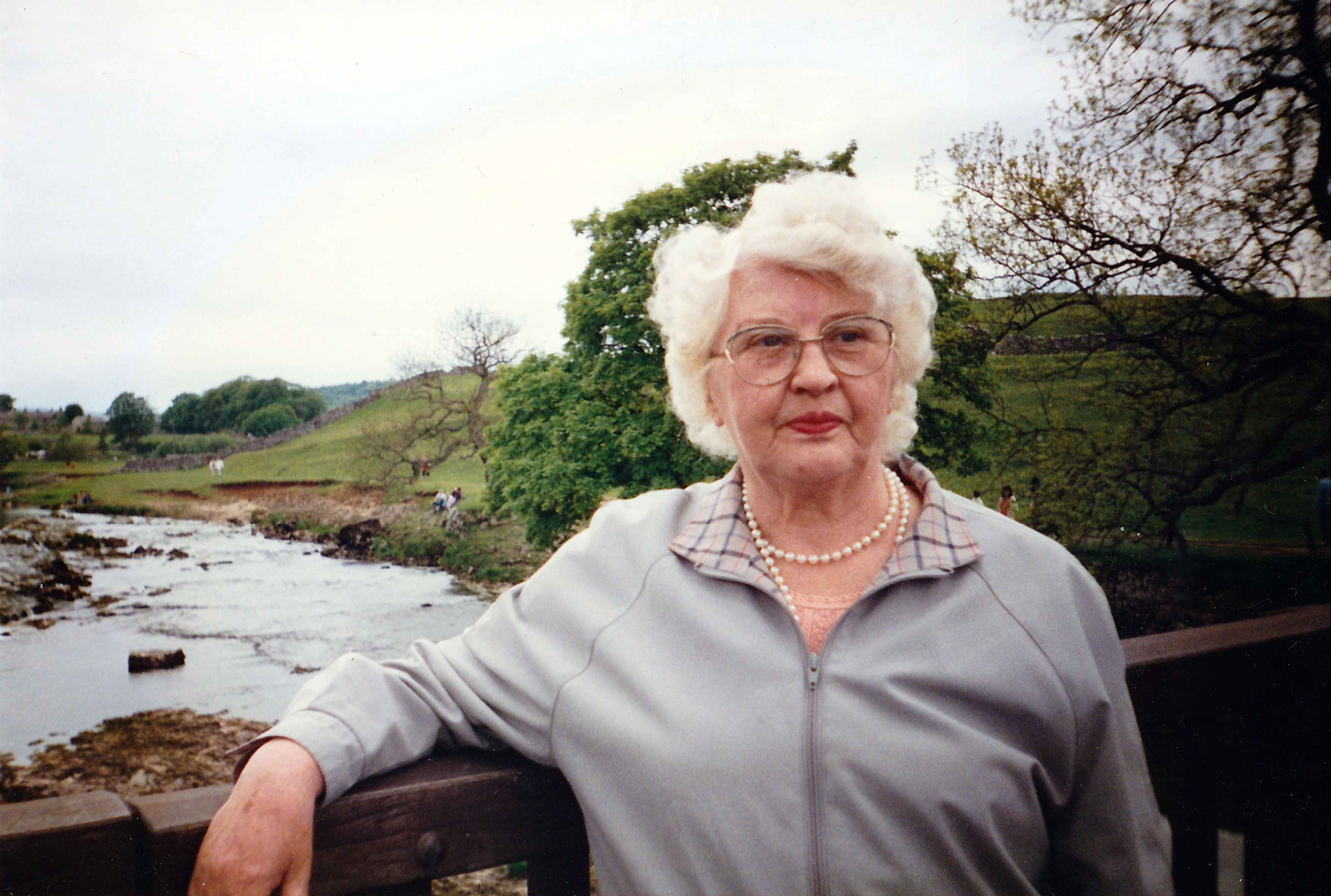
Hilda Harrison passed
away in 2009, on the day before her 86th birthday.
What a delightful tale by a woman who in just a few pages summarized her war experiences with a very descriptive flair.
We as a nation must thank people like Hilda for their service against the Nazi threats during World War II. Without the efforts
put in by people like her this world would have been a very different place. Thank you for your service to the Nation.